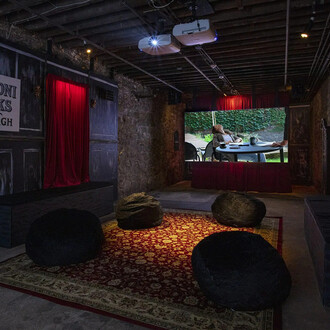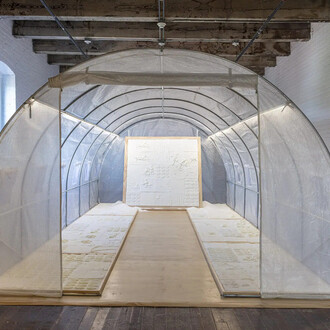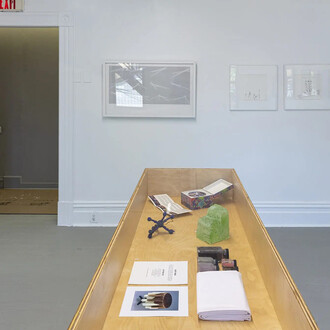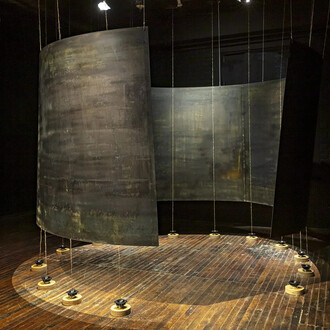Founded in 1968, The Studio Museum in Harlem is internationally known for its catalytic role in championing the works of artists of African descent. In a unique institutional collaboration, CMOA and the Studio Museum present a group exhibition with works by 40 artists, 20 from each of the collections. Responding to a tumultuous and deeply divided moment in our nation’s history, the curators have mined these collections to offer a metaphoric picture of America today. Spanning nearly 100 years—from 1920s photographs by James VanDerZee to recent works by Kerry James Marshall, Ellen Gallagher, and Collier Schorr—20/20 provides a critical opportunity to prompt conversations about the necessity of art during times of social and political transformation.
20/20 draws together works from these important collections in dialogue. The exhibition unfolds through a thematic exploration of the foundations of our national condition, ultimately championing the critical role of art in political and individual expression. The first section of the exhibition, titled “A More Perfect Union,” presents a group of works that consider the formation of our democracy and shifting notions of national identity.
The following two sections of the exhibition—“Working Thought” and “American Landscape”—expand on this by mapping contemporary American experience as a product of historical inheritances. “Working Thought” considers the basis of the national economy and the labor needed to sustain it, with works by Melvin Edwards, David Hammons, Kara Walker, Nari Ward, and others.
In turn, “American Landscape” considers the effects of our national economy on lived experience through artworks that document or express the built environment, past and present. The photographs of LaToya Ruby Frazier and Zoe Strauss record the effects of industry and dispossession on marginalized communities, while more abstract works by Mark Bradford, Abigail DeVille, and Kori Newkirk make use of everyday and found materials to reclaim and reinvent our perspective on natural and urban landscapes.
At the center of 20/20, a section titled “Documenting Black Life” is dedicated to the work of Charles “Teenie” Harris and James VanDerZee. These two prolific photographers working in the post–World War I era captured daily life of the black middle class. VanDerZee and Harris depict Harlem and Pittsburgh, respectively, both destinations of the Great Migration, as bustling, vibrant communities.
The final two sections of 20/20—“Shrine for the Spirit” and “Forms of Resistance”—map a spectrum of artistic response to more current conditions. Works by Edgar Arceneaux, Barbara Chase-Riboud, Ben Jones, Quentin Morris, and Thaddeus Mosley offer quiet, sublime moments of spirituality and introspection, while more directly political gestures by Lorraine O’Grady, Howardena Pindell, and Lorna Simpson explore the power of language, identity, and performance as instruments of institutional critique. This final gallery also showcases CMOA’s newly acquired work from 2016, Untitled (Gallery), by Kerry James Marshall, whose practice challenges art history by reinserting the black figure emphatically into the canon of Western painting.
Taken together, the artworks in this unprecedented collaboration offer multiple pathways for reflection and interpretation, allowing visitors to meditate on the long, complex history of our country.
This exhibition is organized by Carnegie Museum of Art in partnership with The Studio Museum in Harlem and curated by Eric Crosby, Richard Armstrong Curator of Modern and Contemporary Art at Carnegie Museum of Art, and Amanda Hunt, former Associate Curator, The Studio Museum in Harlem, and now Director of Education and Public Programs, Museum of Contemporary Art, Los Angeles.
















